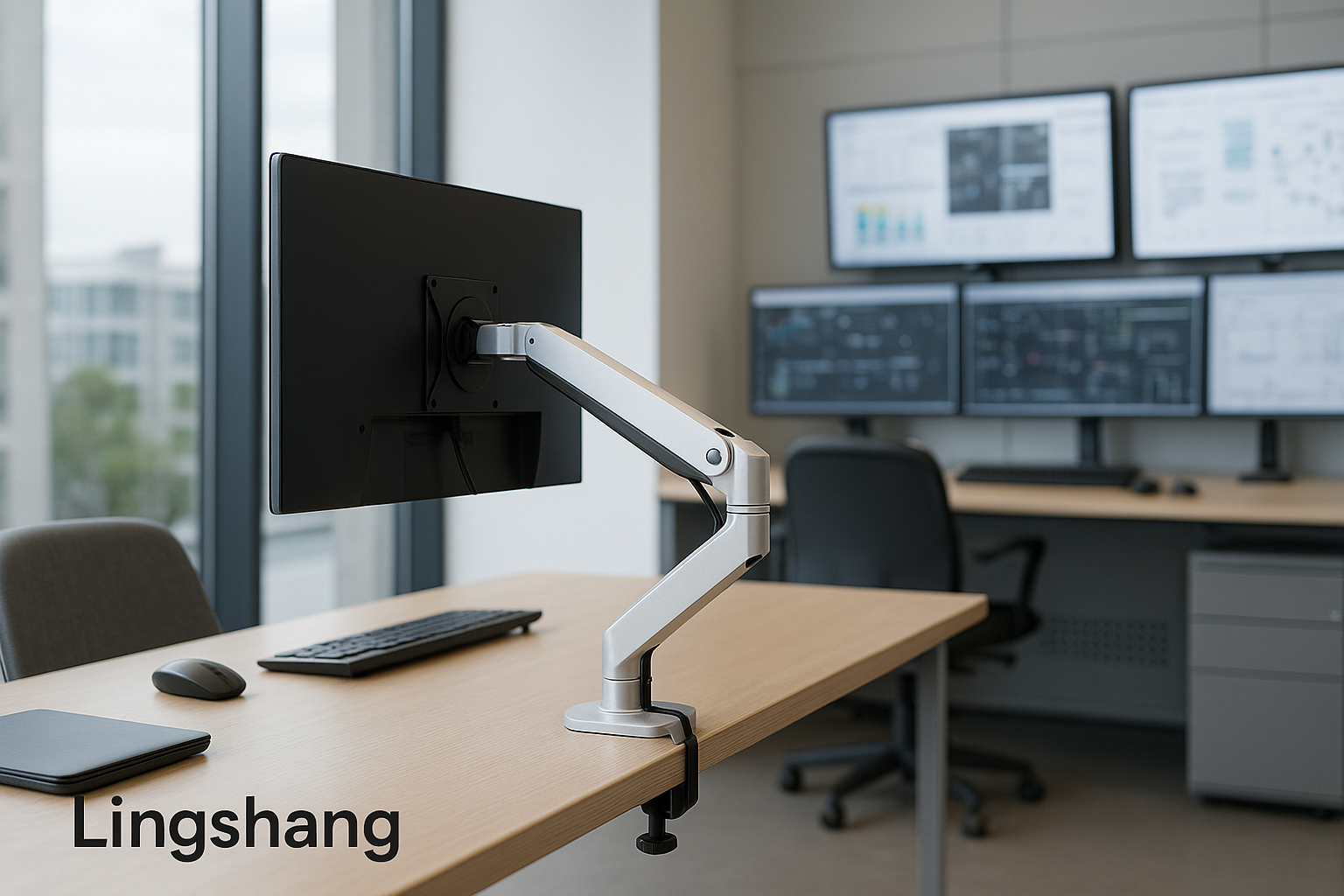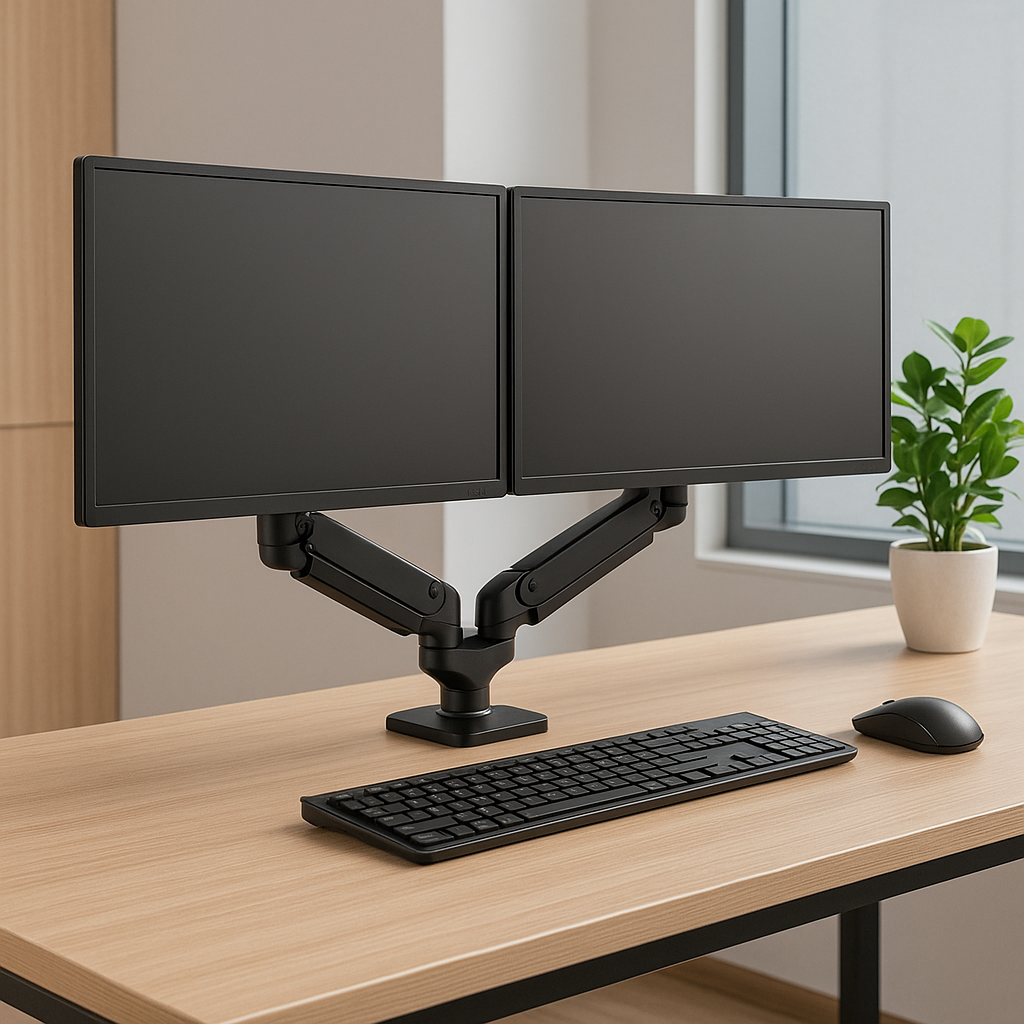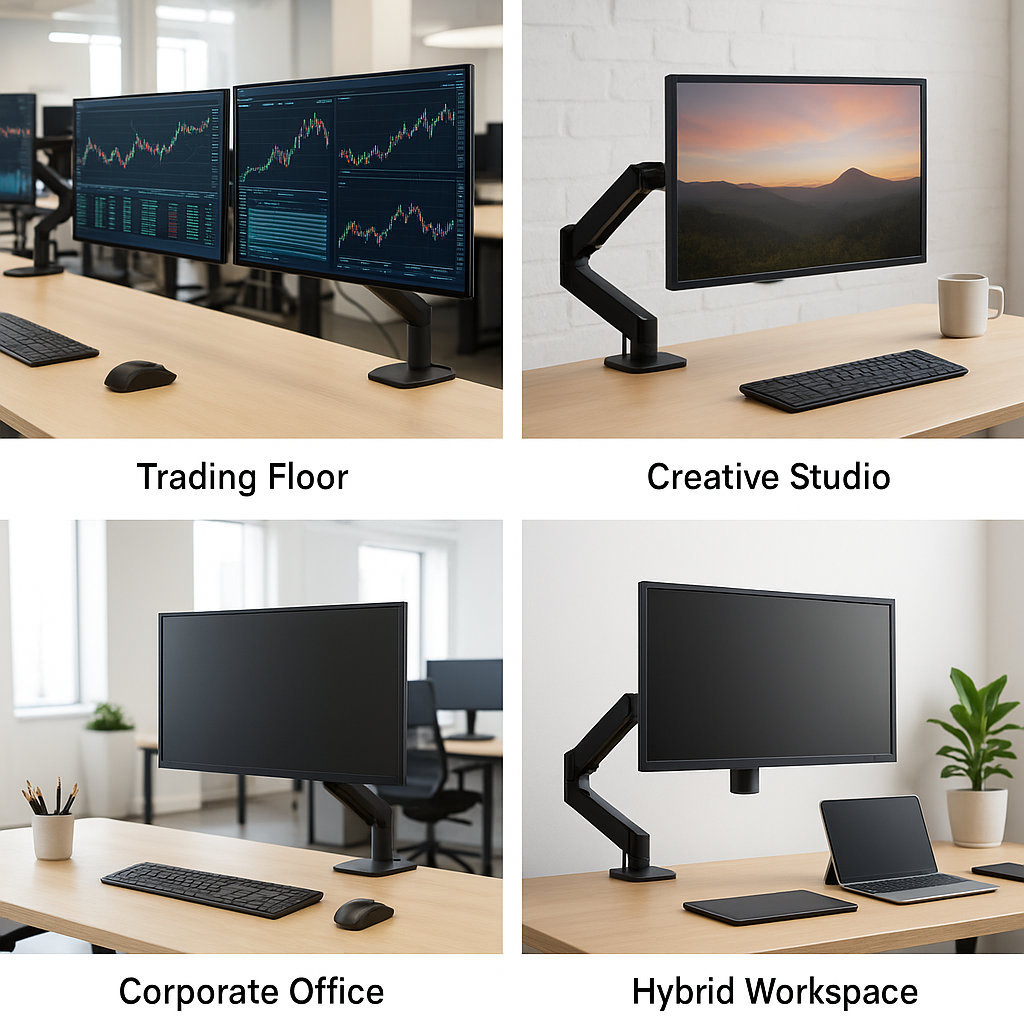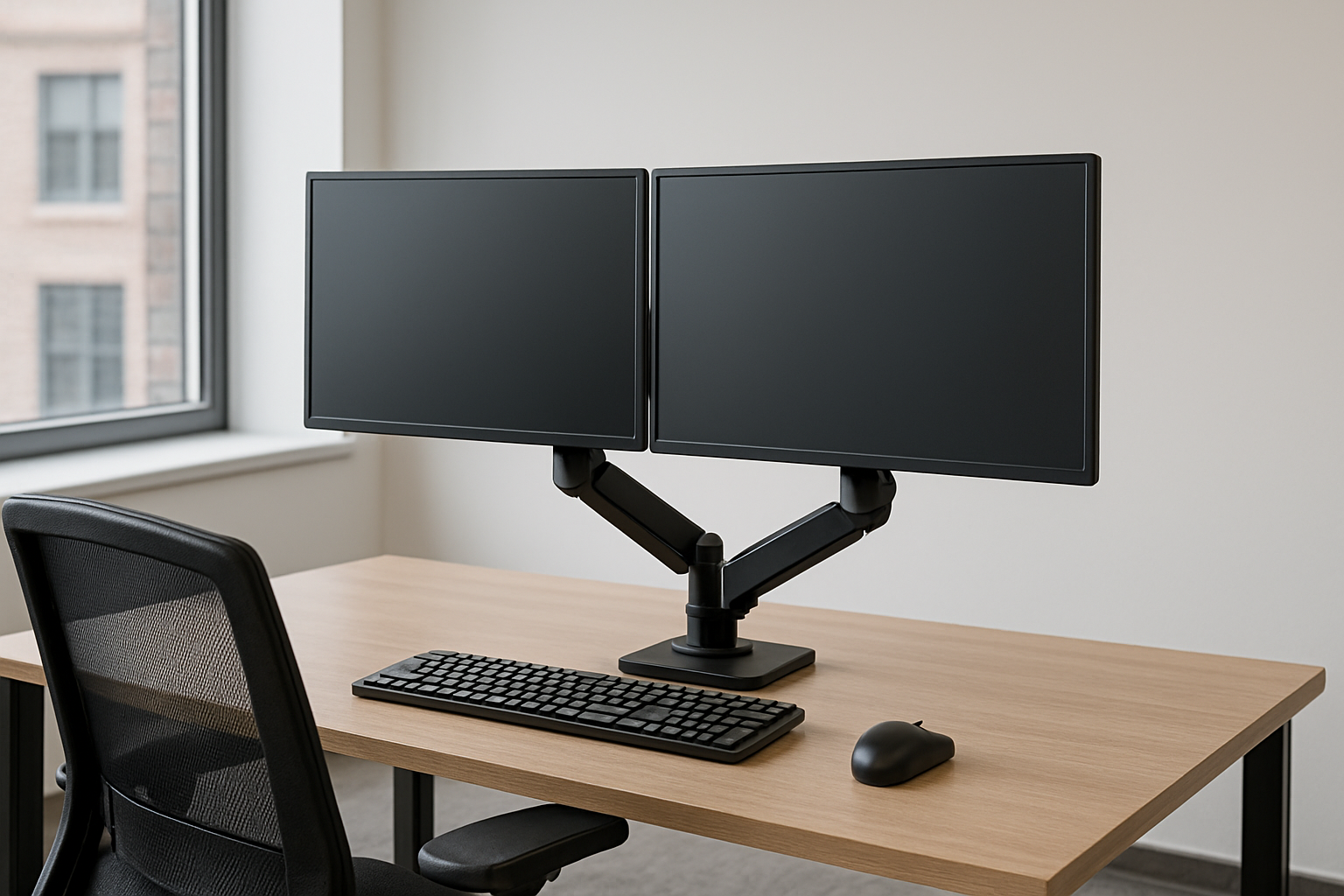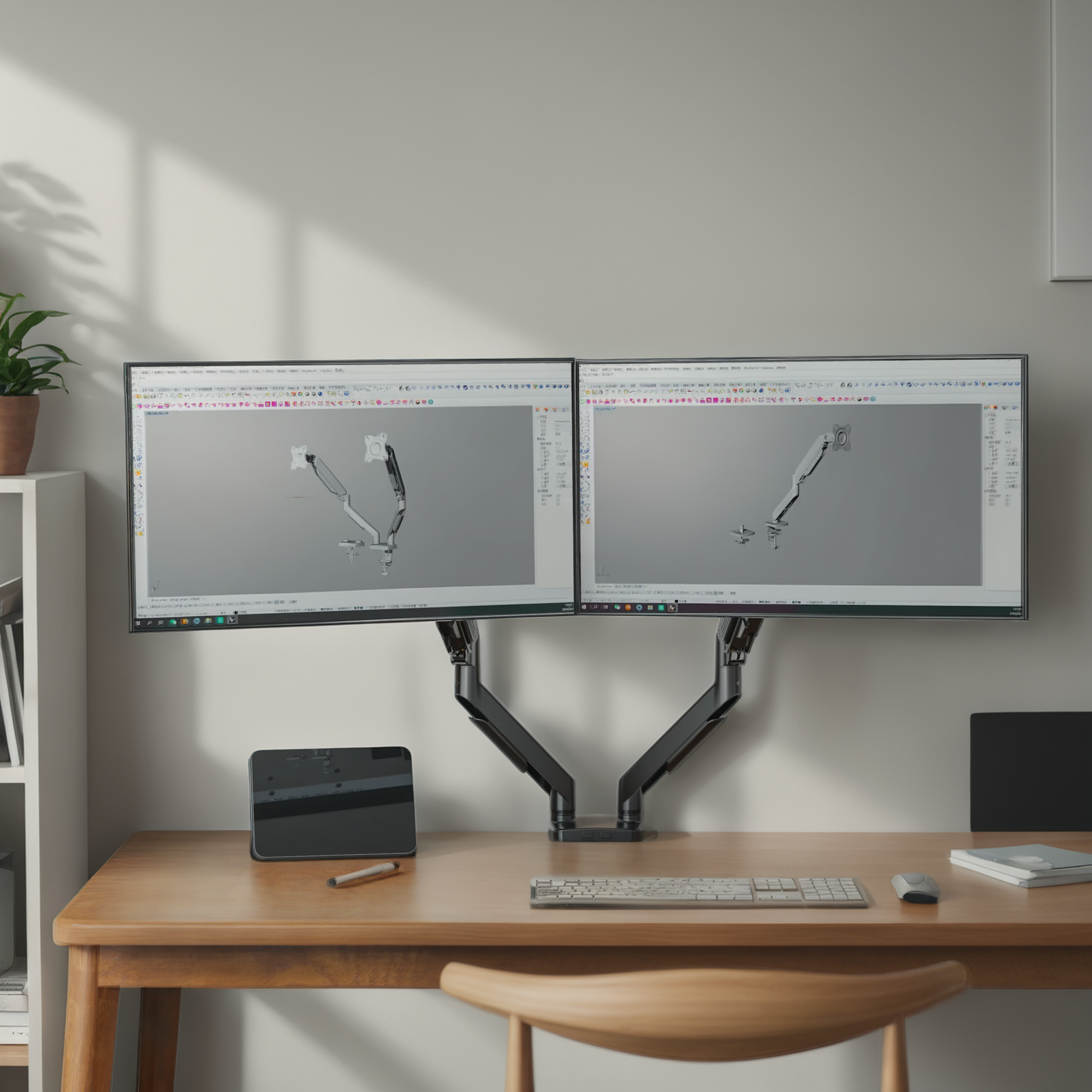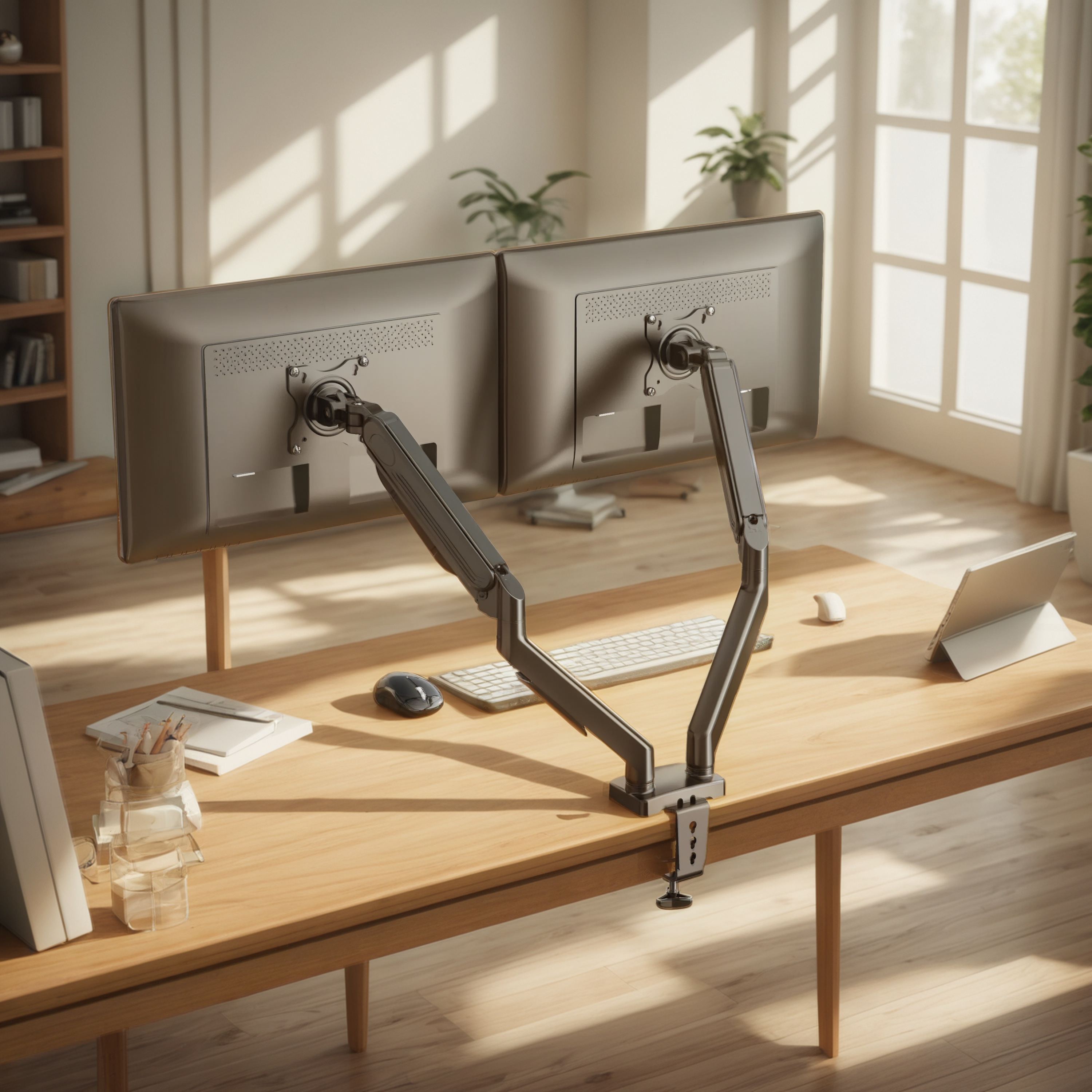
7 Monitor Arm Mistakes You're Probably Making
It’s easy to assume a monitor arm instantly solves ergonomic issues—but if it's used incorrectly,it can do more harm than good.
A recent survey by the National Institute for Occupational Safety and Health (NIOSH) showed that62% of computer usersreported work-related neck or shoulder pain. And many of these issues stem fromimproper monitor positioning—even with high-quality arms.
Here are the most common mistakes we’ve observed in real workspaces—and how to fix them with practical, science-backed solutions.
1. Setting the Screen Too Low or Too High
User pain point: "I always find myself tilting my neck, but didn’t realize my monitor was too low."
Why it’s a problem: Looking too far up or down stresses the neck. Prolonged misalignment can compress cervical discs and reduce circulation.
Solution:
-
Adjust your monitor arm so thetop third of the screen aligns with your eyeswhen sitting upright.
-
Sit back and relax your shoulders—if you need to crane your neck to view the screen, it’s too high or too low.
Ergonomic studies show that optimal eye-level alignment can reduce neck strain by up to 35%(Source: OSHA Ergonomics eTool).
2.Ignoring the Ideal Viewing Distance
User pain point: "My eyes hurt after coding all day—I thought it was just screen time."
Why it’s a problem: If the monitor is too close, it increasesvisual fatigueand forces constant eye refocusing.
Solution:
-
Keep your screen50–70 cm away, roughly anarm’s length.
-
Use your monitor arm’s extension feature to adjust the depth—especially useful in smaller desk spaces.
3.Leaving the Monitor Flat and Unadjusted
User pain point: "I didn’t even realize I could tilt or rotate it—I just set it once and forgot."
Why it’s a problem: Glare, poor neck angles, and limited vertical space can cause eye tension and poor posture.
Solution:
-
Tilt your monitor slightly backward (10–20 degrees) to reduce glare.
-
Rotate one screen vertically if working with code or long documents.
-
Lingshang arms support fulltilt, swivel, and rotation, giving you total control.
4.Not Using the Cable Management System
User pain point: "My desk looks like spaghetti, and I always knock cables loose."
Why it’s a problem: Cables that dangle freely limit arm movement and createvisual clutter, which increases cognitive load.
Solution:
-
Use the integratedcable routing channelsin your monitor arm.
-
Secure cables with clips or velcro ties to the arm’s spine, maintaining both aesthetics and function.
A clean workspace has been linked to improved task focus and 20% faster completion rates (Princeton Neuroscience Institute, 2011).
5.Incorrect Clamp Placement
User pain point: "I mounted it on the corner because I thought it looked better—but now it’s wobbly and awkward."
Why it’s a problem: Poor clamp positioning reduces stability and limits range of motion.
Solution:
-
Place the clamp in acentral or structurally supported sectionof the desk.
-
Ensure the arm haseven reato your screen’s placement area.
6.Using the Wrong Arm for Your Monitor Size
User pain point: "My ultrawide keeps sagging—I thought all arms were the same."
Why it’s a problem: Every monitor arm has weight and size limits. Using one not designed for your monitor causes drooping, jitter, and wear.
Solution:
-
Check your monitor’sweight and VESA mount compatibility.
-
Choose a monitor arm rated for your screen size—whether 24”, 32”, or ultrawide.
7.Never Rechecking or Readjusting
User pain point: "I set it once months ago. Now I’m getting wrist pain and shoulder tension."
Why it’s a problem: Your posture, habits, and even your chair change over time. A static setup becomes outdated quickly.
Solution:
-
Do aquarterly check-in: sit upright, adjust height, tilt, and distance as needed.
-
Stand-desk users should alternate between seated and standing positions and adjust accordingly.
Build Smarter Habits with the Right Tools
A monitor arm is an excellent ergonomic upgrade—but it’s only as effective as how you use it. Regular adjustments, clean cable management, and screen awareness go a long way inprotecting your posture and boosting productivity.
Lingshang monitor arms are engineered with the flexibility and precision developers, designers, and remote teams need to build healthy, high-performing workspaces.
Ready to Improve Your Setup?
Explore our ergonomic desk accessories and monitor arms on the homepage.
Have questions about monitor fit or positioning? Reach out anytime through ourcontact page—we’re here to help you build smarter.

